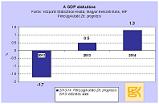Managerial motivation and strategies in changing the ownership structure in Hungary
Managers of state enterprises are often considered as obstacles to privatization. In Central Europe, however, they are accused of the opposite attitude as well: they are too active in the process, wishing to preserve or to convert their former political power into economic power and "selling out" the state assets. Both statements can be verified by reasonable arguments and concrete examples. So presumably there is no general rule for describing the managerial attitudes towards changing the ownership structure. In order to understand the behavior of top management, we have to describe a set of criteria that accounts for the differences. This paper tries to give a dynamic explanation, based on experiences of the post-communist transition in Hungary between 1988 and 1992.
The paper will argue that the dominant form of managerial motivations and strategies has changed even during this short period. The tendency of escaping from the state has become an orientation of escaping to the state. According to our investigations, there are three main factors influencing managerial attitudes towards changing the ownership structure. First, the political and financial strength of the state as owner and regulator, second, the formal and informal alternatives available for managers and third, the methods of changing ownership, including the future proprietary structure of the given firm.
In: The Political Economy of the Transition Process in Eastern Europe, Laszló Somogyi ed., Edward Elgar, Aldershot, Brookfield 1993. 227-239. Tovább»





